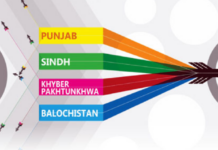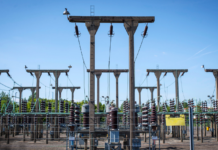Punjab’s total government debt fell by Rs24.8 billion in the second quarter (Oct-Dec) of the current fiscal year 2024-25, reflecting a 1.5% decline due to foreign exchange gains and a reduction in the province’s net debt position, according to a report by the Punjab Finance Ministry.
As of December 31, 2024, the province’s debt stock stood at Rs1,654 billion, down from Rs1,678.8 billion in September. External loans accounted for Rs1,652.5 billion, while domestic borrowing stood at Rs1.5 billion. Punjab’s debt now represents 2.46% of its Gross State Domestic Product (GSDP), slightly lower than the 2.49% reported at the end of the first quarter.
The decline was attributed to a forex gain of Rs12.1 billion due to the depreciation of Special Drawing Rights (SDR), Japanese Yen, and Chinese Yuan, along with a reduction in new debt by Rs12.7 billion.
The report also noted that Punjab’s outstanding debt figures exclude provincial guarantees for various government entities and commodity debt, which stood at Rs103 billion, primarily backed by wheat stock procurement and federal government guarantees under the Cash Credit Limit (CCL).
Punjab’s borrowing remains heavily reliant on external sources, with 99.9% of its debt portfolio consisting of multilateral and bilateral loans secured on concessional terms for infrastructure development and policy reforms. The remaining 0.1% comes from domestic borrowing via the federal government.
The International Development Association (IDA) and the International Bank for Reconstruction and Development (IBRD) account for 54%of Punjab’s external debt, followed by the Asian Development Bank with 21%, Chinese loans at 21%, and other lenders contributing 4%.
Sector-wise, agriculture, irrigation, and livestock received the largest share of government borrowing at 25%, followed by transport and communication at 21%, education at 20%, urban and community development at 15%, governance at 10%, health at 5%, and other sectors at 4%.
The province’s debt portfolio is overwhelmingly dominated by foreign currency loans, with 70% denominated in US dollars, 21% in SDRs, 5% in Japanese Yen, 2% in Chinese Yuan, and 1% in other currencies. This composition leaves Punjab vulnerable to exchange rate fluctuations, as any shift in the rupee’s parity against major currencies directly impacts the valuation of its debt.
The report highlighted that 73% of the province’s total debt is contracted on fixed interest rates, making it less susceptible to changes in global interest rates. However, with the majority of Punjab’s debt portfolio tied to foreign currencies, exchange rate volatility remains a key financial risk for the province’s overall debt sustainability.























